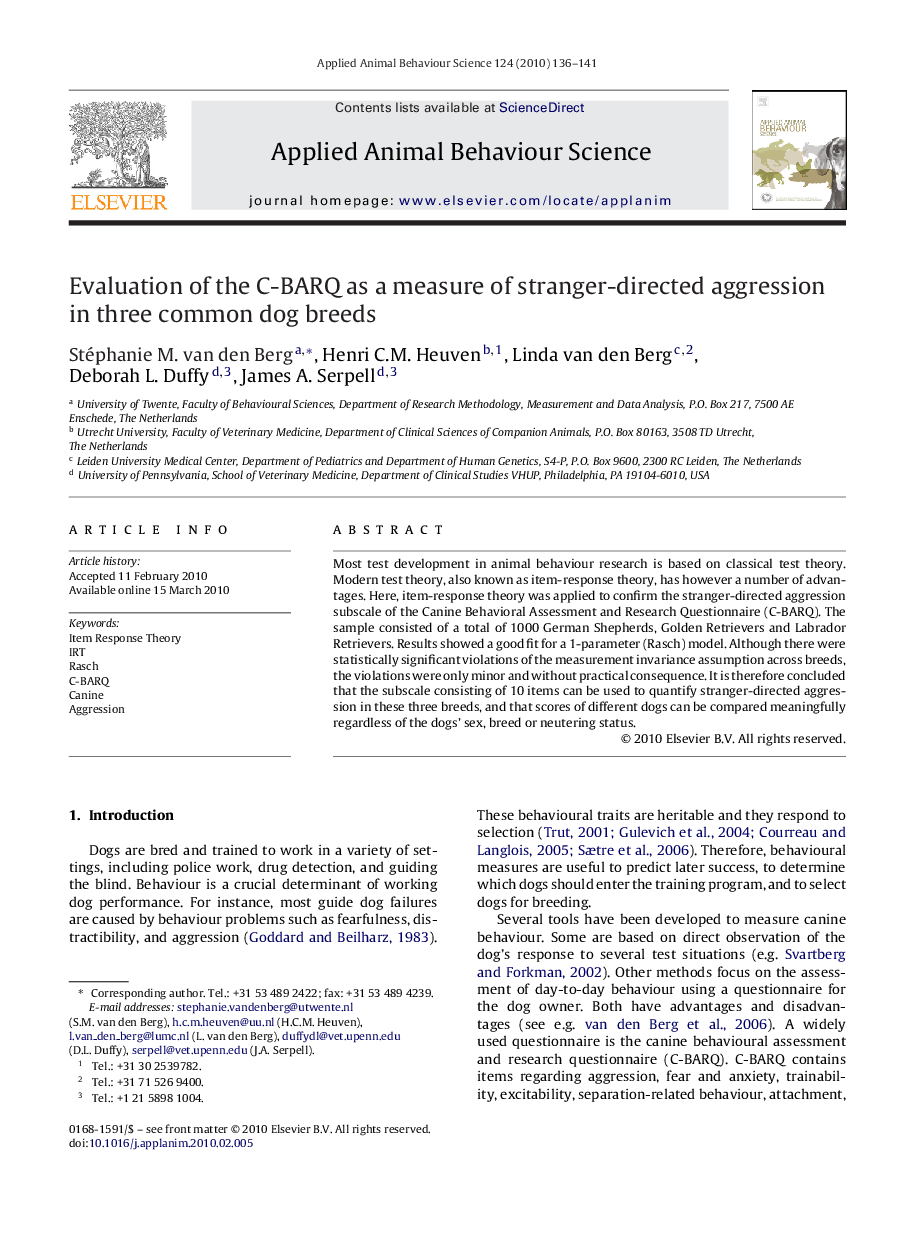| Article ID | Journal | Published Year | Pages | File Type |
|---|---|---|---|---|
| 4523466 | Applied Animal Behaviour Science | 2010 | 6 Pages |
Most test development in animal behaviour research is based on classical test theory. Modern test theory, also known as item-response theory, has however a number of advantages. Here, item-response theory was applied to confirm the stranger-directed aggression subscale of the Canine Behavioral Assessment and Research Questionnaire (C-BARQ). The sample consisted of a total of 1000 German Shepherds, Golden Retrievers and Labrador Retrievers. Results showed a good fit for a 1-parameter (Rasch) model. Although there were statistically significant violations of the measurement invariance assumption across breeds, the violations were only minor and without practical consequence. It is therefore concluded that the subscale consisting of 10 items can be used to quantify stranger-directed aggression in these three breeds, and that scores of different dogs can be compared meaningfully regardless of the dogs’ sex, breed or neutering status.
